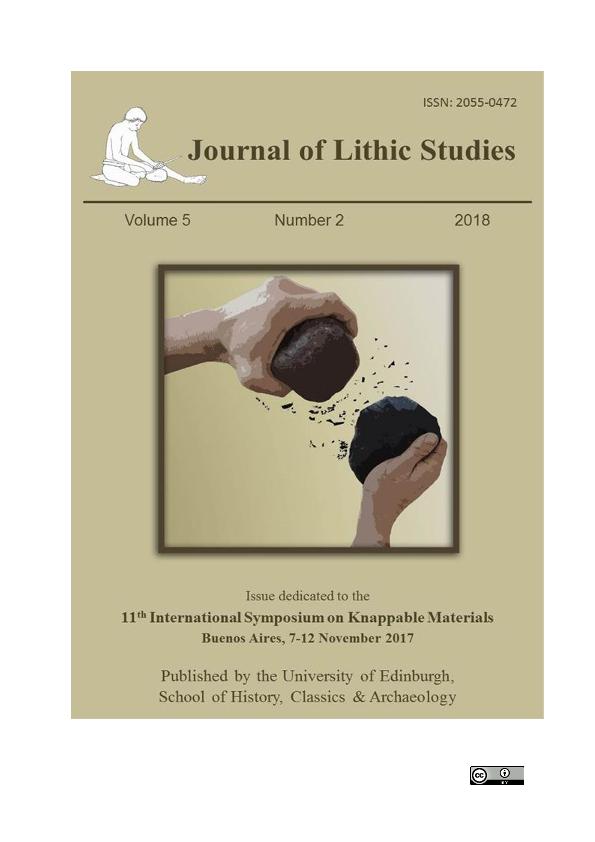Artículo
Bipolar flaking as a component of a supraregional lithic resource base: A comparative study of cores from the Pampean and Northcentral Patagonian Atlantic coasts (Argentina)
Fecha de publicación:
12/2018
Editorial:
University of Edinburgh. School of History, Classics and Archaeology
Revista:
Journal of Lithic Studies
ISSN:
2055-0472
Idioma:
Inglés
Tipo de recurso:
Artículo publicado
Clasificación temática:
Resumen
Several authors argue that bipolar technology is an expeditious and versatile strategy, efficient for the reduction of small nodules. However, few studies analyze the use of bipolar reduction in relation to the lithic environmental supply. At the Pampean and Patagonian maritime coast, the technique has been widely recorded and seems to be conspicuous in indigenous populations that occupied coastal areas. With the aim of assessing and comparing the application of bipolar reduction, 196 nuclei recovered from sites of diverse chronologies in the Pampean and northcentral Patagonic coasts were analyzed. The use of the bipolar technique was observed in relation to the lithic environmental structure, the size of nodules and their raw material. The results revealed high frequencies of bipolar nuclei at the Pampean coast (87%) and moderate frequencies at the northcentral Patagonic coast (39%). It was determined that the variables that influenced the application of bipolar techniques the most were the small size of the nodules and their rounded shape, generally thick, and without flat surfaces. As for raw material quality, the technique was applied on good to medium quality rocks at the Pampean coast, while in the northcentral coast it was exclusively applied on pebbles and cobbles of superior qualities (very good to excellent). The differences observed are most likely linked with technological choices made by different coastal populations to make the best use of widely available local rocks.
Palabras clave:
Lithic technology
,
Pampean coast
,
Patagonian coast
,
Holocene
Archivos asociados
Licencia
Identificadores
Colecciones
Articulos(CCT - LA PLATA)
Articulos de CTRO.CIENTIFICO TECNOL.CONICET - LA PLATA
Articulos de CTRO.CIENTIFICO TECNOL.CONICET - LA PLATA
Citación
Banegas, Anahi; Bonomo, Mariano; Gomez Otero, Julieta; Bipolar flaking as a component of a supraregional lithic resource base: A comparative study of cores from the Pampean and Northcentral Patagonian Atlantic coasts (Argentina); University of Edinburgh. School of History, Classics and Archaeology; Journal of Lithic Studies; 5; 2; 12-2018; 1-21
Compartir
Altmétricas




